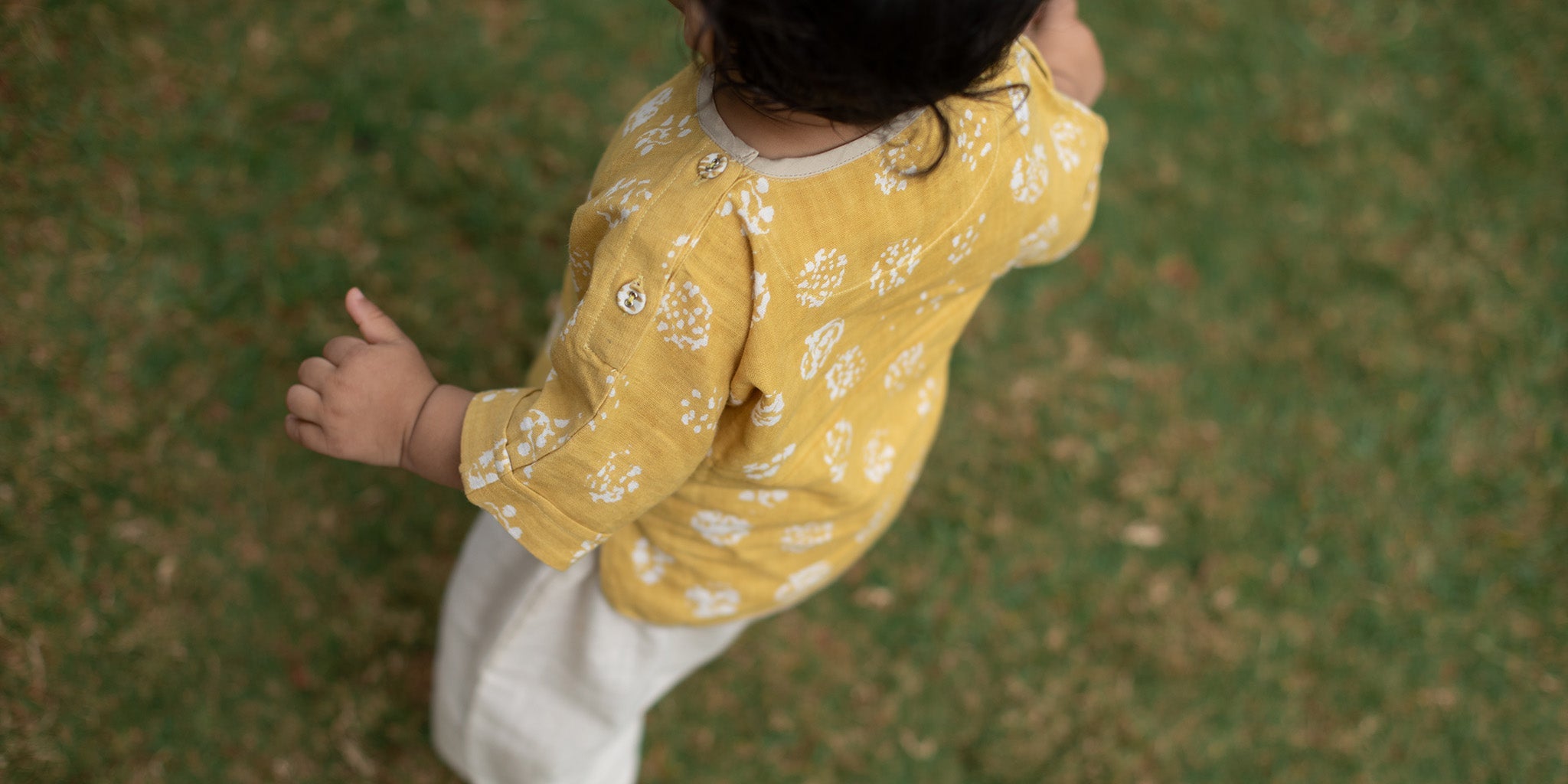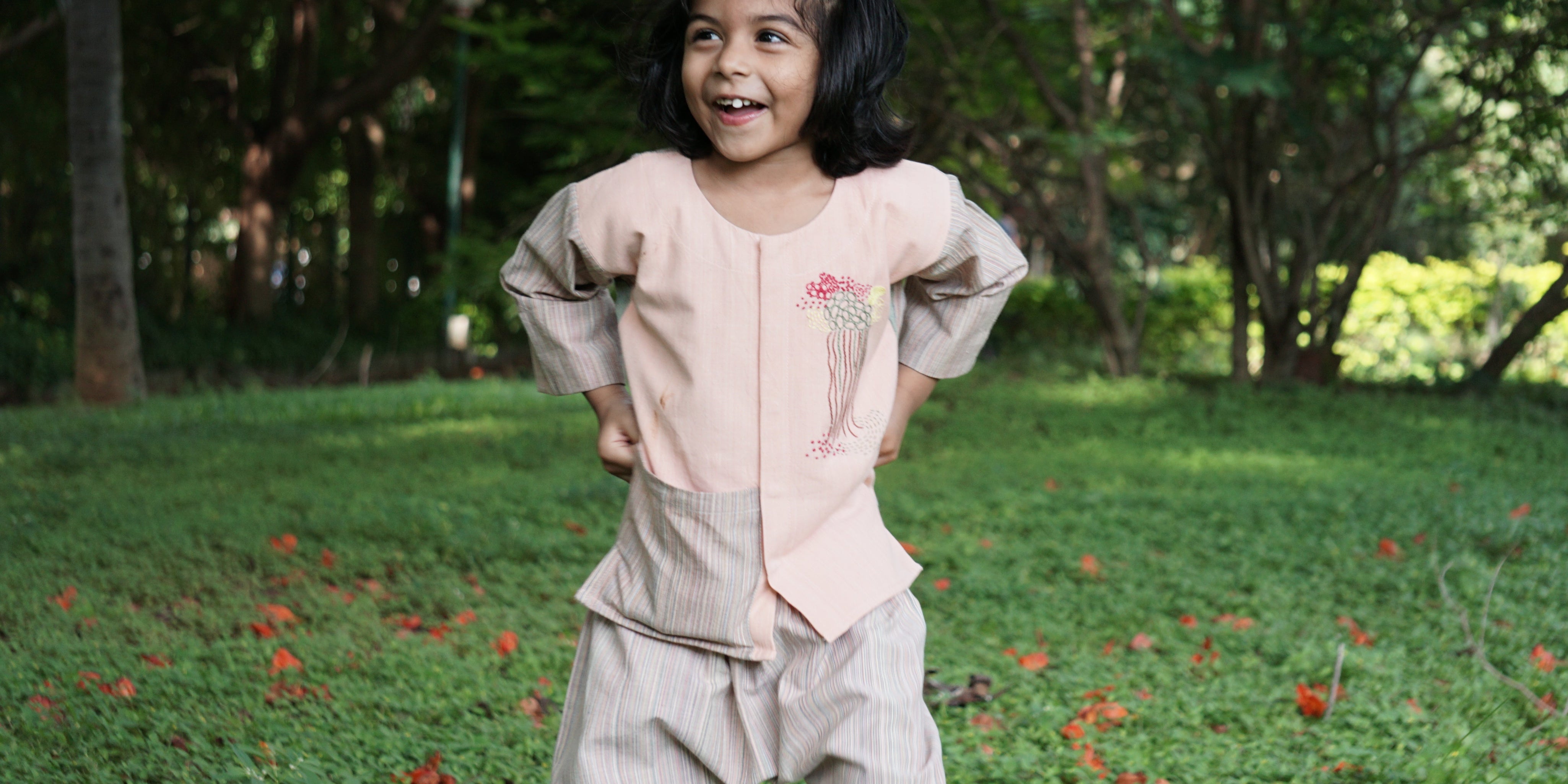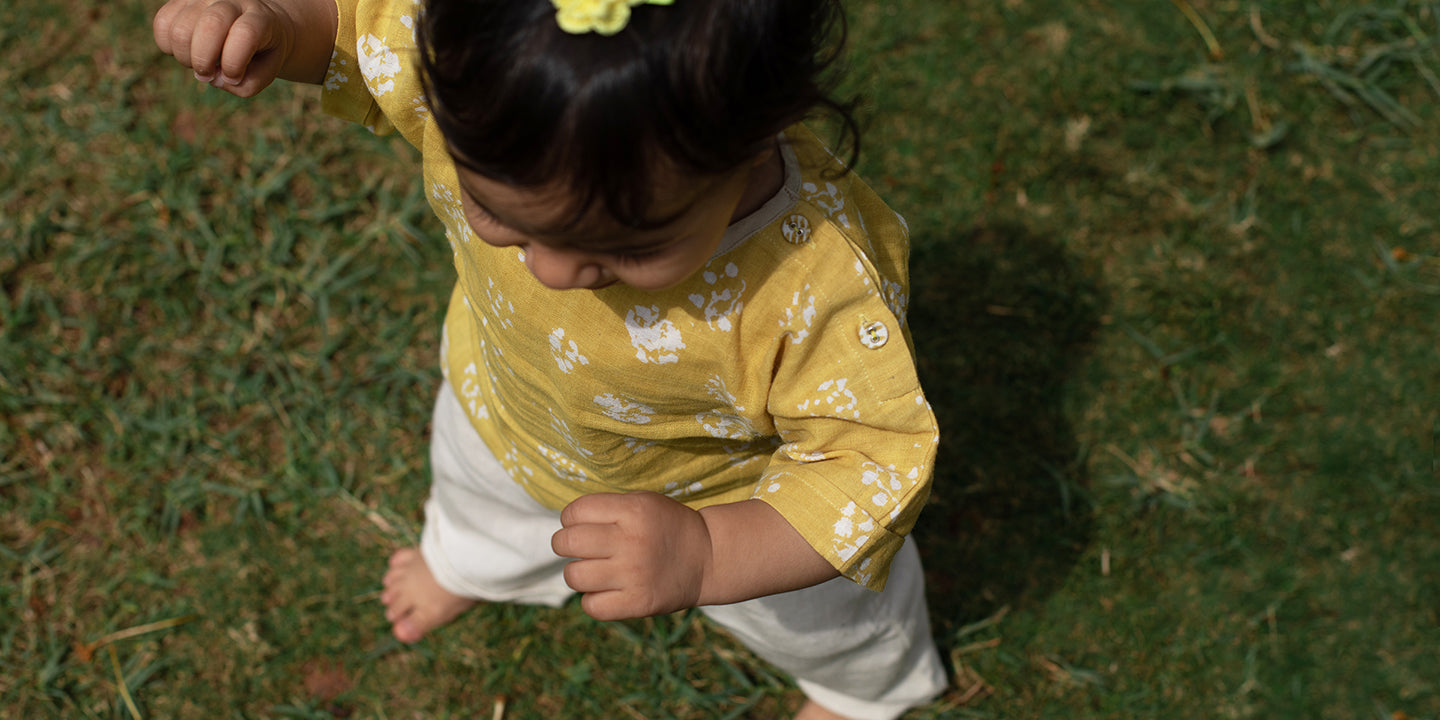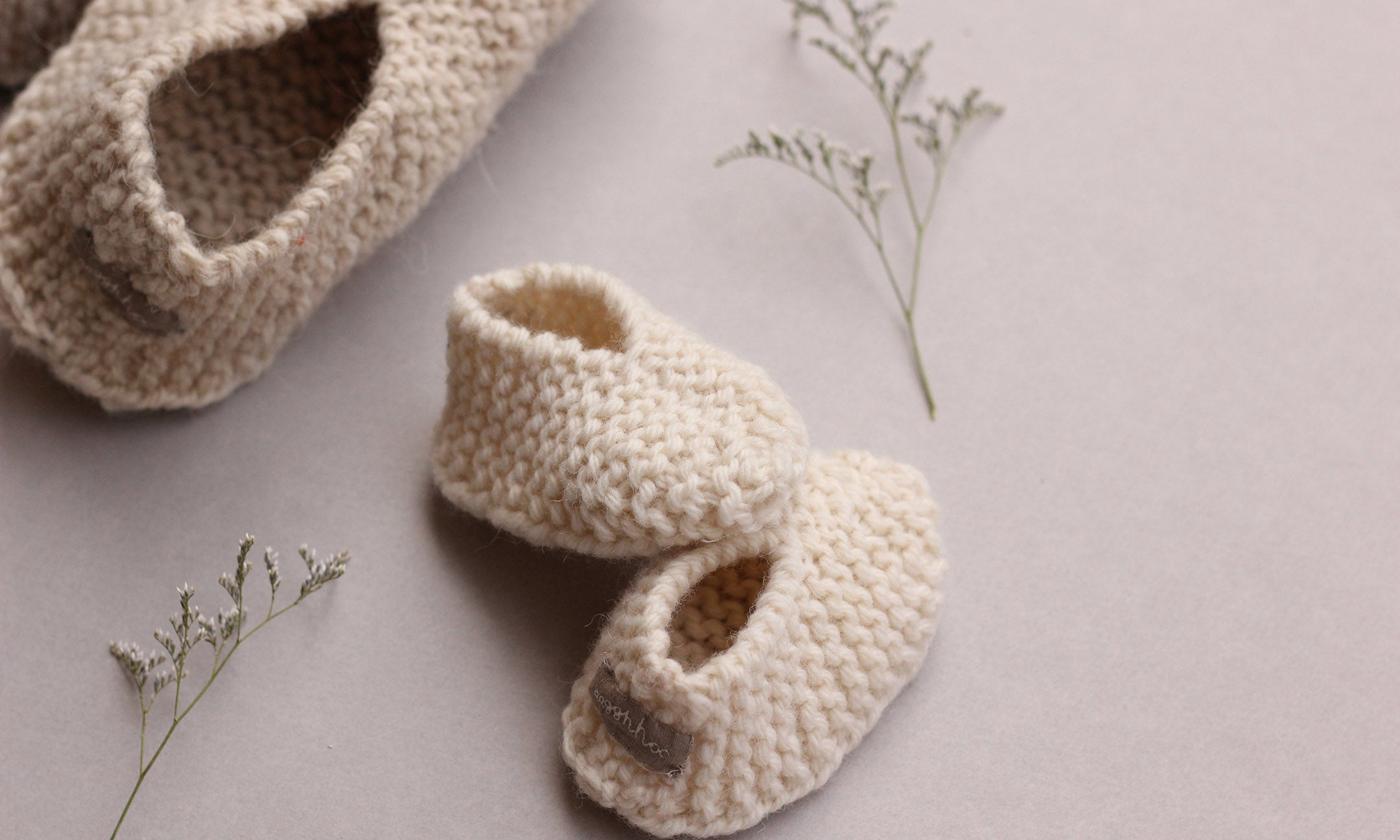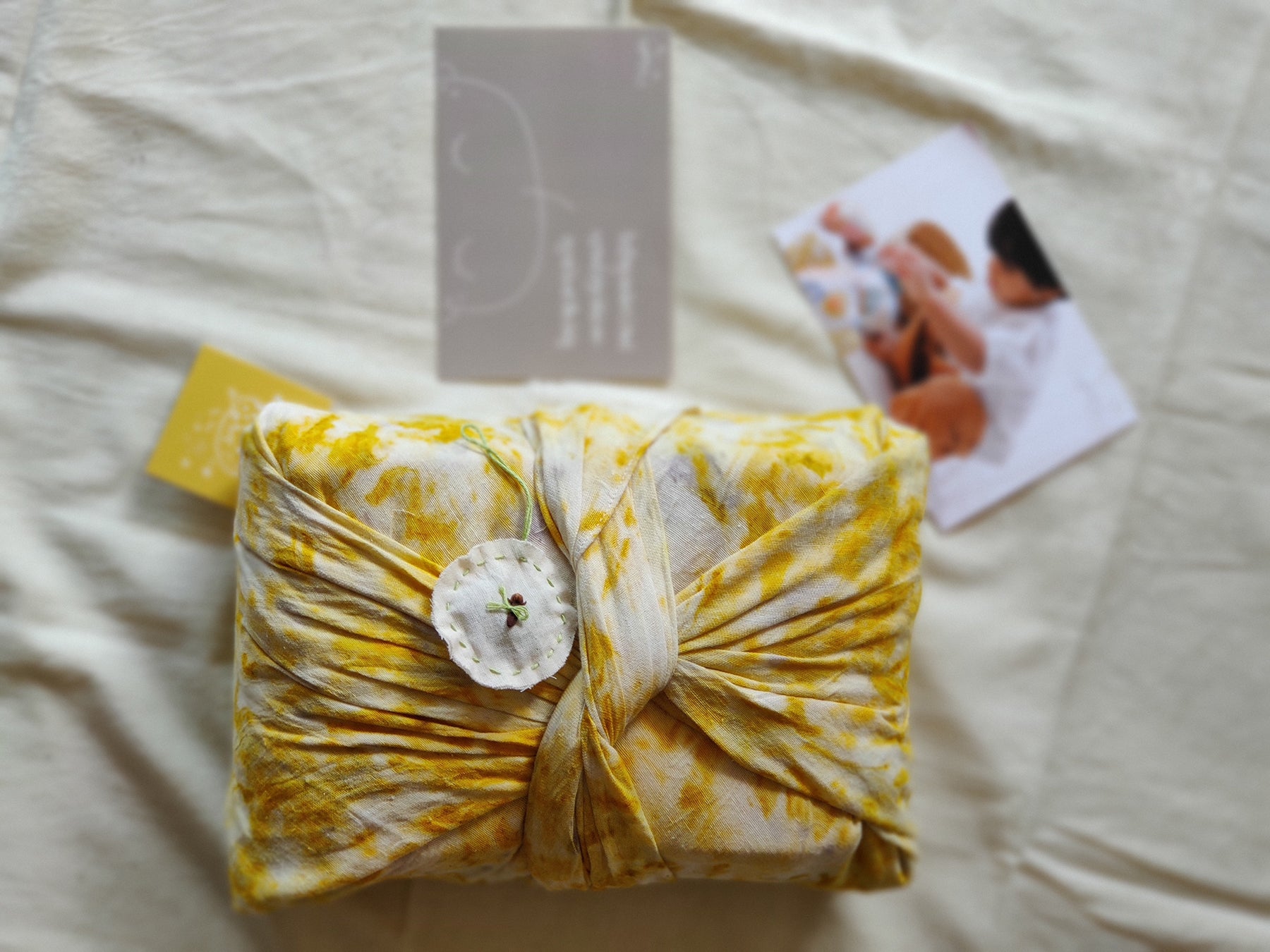Parents inherently want the best for their babies! They all want to be the best parents they can be for their children, but there are often conflicting choices on what’s best for your baby. Newborns are born with highly porous skin, hence sensitive and susceptible to infections due to unnatural materials. Baby skin is not mature at birth and continues to develop over the first year of life which is why it loses water more quickly. Skin care products, laundry detergents, dyes that go into the baby garments/sleepwear/bedding, anything can trigger rashes and serious skin issues.
In the early years of a baby's growing period, we often give extra attention to everything a child is surrounded with. But why do we shut our minds when it comes to the choice of textiles? Textiles are one of the important aspects of a baby nursery and wardrobe. They literally form the second skin that keeps a child calm and comfortable. Mindful choices for a baby goes a long way hence its important to understand why & how native organic cotton is compatible for your child. Aagghhoo encourages the usage of Indigenous Organic Kala Cotton, as it is one of the best sustainable material choices as well as beneficial for the wellbeing of every child.
Pure & Clean textiles
Organic Kala Cotton does not make use of any kind of fertilizers or pesticides and they can’t be genetically modified thus letting it nurture as naturally as possible.
Safe for the skin of newborns, Organic Kala Cotton is a natural fiber that is soft, breathable, and has many natural qualities. It helps regulate the body temperature, thus avoiding any skin issues.
Longevity: The Organic Kala cotton is hand-plucked thus making it soft and durable. Not just that, but they are anti-microbial, irritation-free, anti-fungal and non-irritants for your baby’s skincare routine. The main reason for the longevity is the absence of chemicals that causes damage to the clothing leading to lower quality textiles.
All about Kala Cotton!
Cotton is the most used natural fabric in the world. It is widely accepted for its beautiful touch, strength and absorbance level. The word “Cotton'' is also a huge generic word, as there are varieties in cotton which are not known to most. These cotton varieties are native to each region and have their own unique textures, colors, staple varieties and much more to it. India has the right type of soil, climate and indian seed varieties for cotton cultivation. Yet, we see the majority of people going behind “Certified Cotton“ or “Organic Cotton” termed fabrics.
Kala cotton is an energy-efficient and carbon neutral crop. Hard and resilient even under harsh weather conditions, it is completely rain-fed and grows naturally even in the arid, drought-prone areas of Kutch, where there is less than 40 cm of rainfall. Kala cotton (Gossypium herbaceum) is an indigenous strain of rain-fed ‘old world’ cotton that was a part of India’s cotton export to Great Britain during colonial rule when the forcible cultivation of long-staple variety of cotton led to disruption in the value chain between domestic cotton farmers, weavers and natural dyers.

Each Artisan holds pride in their products, just like any parent-child relationship. Even as they are not getting paid the deserving amount or respect, we can see them still hanging on to the last ray of hope. That explains the value of Handloom and Handicrafts. It is all that the artisans experience; their love, care, hope, struggles.
One of the first organizations to promote and create awareness towards Kala Cotton was Khamir’s Kala Cotton Initiative, redefining the old craft value chain made for the modern marketplace. It encouraged sustainable cotton textile production, as well as the preservation of agricultural and artisan livelihoods in Kutch. To preserve the agricultural and artisan livelihoods in Kutch it was necessary that raw material was locally grown, environment-friendly which could potentially create social value. It was a joint initiative of Kachchh Nav Nirman Abhiyan and the Nehru Foundation for Development, to create a platform where awareness and sustenance of traditional crafts was promoted under Khamir. Kala Cotton is a fabric that allows us to take a step ahead towards sustainable living, as the process is purely Eco-friendly till the end.
It's a collective responsibility to create awareness and preserve native textile culture with numerous benefits for people and the planet.
P.S. Check out our collection of Kala Cotton series and see for yourself why conscious parents love our products!



